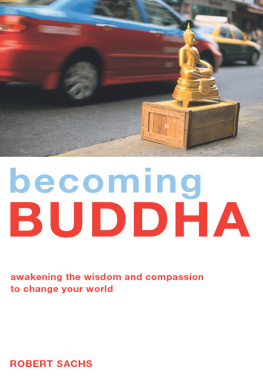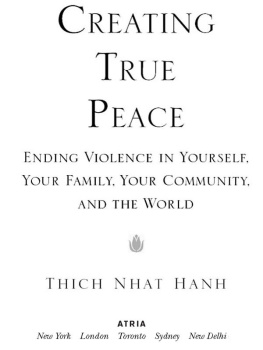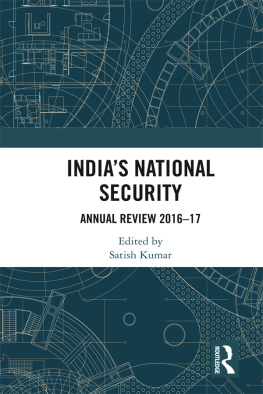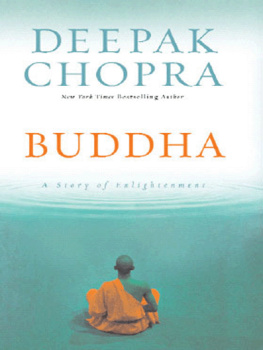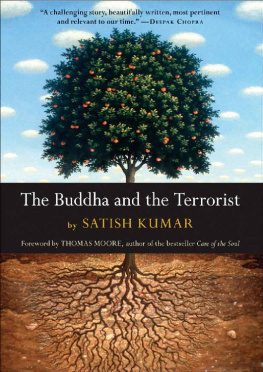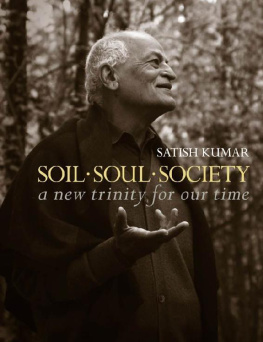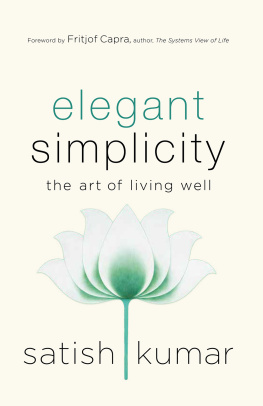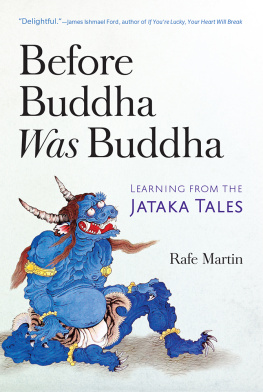The
BUDDHA
and the
TERRORIST

by
SATISH KUMAR
with a foreword by
Thomas Moore
and an afterword by
Allan Hunt Badiner

Algonquin Books of Chapel Hill
Published by
ALGONQUIN BOOKS OF CHAPEL HILL
Post Office Box 2225
Chapel Hill, North Carolina 27515-2225
a division of
WORKMAN PUBLISHING
225 Varick Street
New York, New York 10014
2004 by Satish Kumar. Foreword 2006 by Thomas Moore.
Afterword 2004 by Allan Hunt Badiner.
All rights reserved.
Library of Congress Cataloging-in-Publication Data is available for a previous edition of this work.
E-book ISBN 978-1-61620-240-8
CONTENTS

FOREWORD

Holy Terror
by Thomas Moore
It is often said, accurately, that violence begets violence. There is a virus buried deep in all violence that is contagious, that inspires an equally brutal and mindless response. A terrorist blows up a bus, and an army comes out to settle the score. This exchange of violence and this contagion of terror have been handed down for eons from family to family and from nation to nation. It is a chain of terror made up of people gone amok with anger and those just as disturbed with their feelings of virtue and righteous vengeance.
But there is good news. The Gospel of Jesus, the Dharma of Buddha, the Tao of Lao Tzu, and the tariqa, or way of love, in Sufism all teach that you can let go of your grip on this chain. You can be free of it. When obscene violence interrupts your life, you dont have to respond with virtuous, justified, and reasonable force. You can choose not to be part of the destructive cycle, and that choice not to participate is a first step toward peace.
But to step outside the circle of terror you have to do something quite unreasonable. You have to forfeit vengeance and abandon all reasonable expectations that the majority of your community, friends, and family may take for granted. You will probably have to go it alone and trust your spiritual instincts. You may appear passive and weak. Only you know the inner courage needed to overcome habits of vengeance and punishment that are assumed to be right and virtuous.
You need your spiritual instincts because the way out of violence depends on a great and penetrating vision. You have to understand radically that terrorism of all kinds is an insanity, whether it is the work of a band of renegades or the more sanctioned and public action of an army. You have to understand that violence, even when calculated, is the expression of a pained and twisted soul. It is the work of a spirit or urge that takes over a person or a people and blinds them to human solidarity and community. Your job, in the spirit of the Buddha and Jesus, is to calm the souls of everyone involved.
At root, the word terror means to quiver or tremble, like a bird in the hand or a leaf in the wind on a tree. Its more than fear. Essentially it is a profound awareness of the power of life itself. A psalm from the Bible says, The Lord most high is terrible. And at the consecration of a church the choir sings, Terrible is this place. (In this old usage, terrible and terror are different forms of the same word.)
The Lord, the source of life, truly inspires terror because life is so mysterious and overwhelming and because it offers so much vitality and so much death. According to a classic definition, the holy is mysterium tremendum et fascinans, that is, a mystery that makes you tremble and fascinates you. The ultimate terror is a stark realization of the holiness and awesomeness of life.
But everything is subject to human neurosis and psychosis. Its quite proper to tremble at the sight and feel of natures beauty and power, but its a travesty for anyone to force another to tremble at the sight of weapons and savagery. The most beneficial of things can be twisted into something dangerous and ugly. When that happens, we usually add an ism to the word. Community becomes communism, nationality becomes nationalism, and terror becomes terrorism. Terrorism is a sacrilege, and our task is to respond by restoring the holiness of lifes power.
Humans are always trying to usurp the power of life for their own purposes. In the National Museum of Ireland you can see and hear ancient and elaborate horns that were blown before battle to terrorize an enemy, and on the American plains warriors would deck themselves in war paint before fighting to instill fright. A husband raises his voice and smashes furniture to terrorize his wife.
It is tempting to respond to savage terrorism with violence that looks more civilized. We cover over our terrorism with a veneer of patriotism, piety, and justifications. But beneath all the formality we are blowing our horns like the Celts, convincing ourselves of our innocence as we arm our weapons.
Religions explain the human love of war as a misplaced and misunderstood version of the struggle with ignorance and blind passion. Many in Islam would say that jihad is primarily a spiritual battle for insight and tranquility. Jesus said that he brought a sword, but clearly he wasnt talking about a literal fight. He also told his companion Peter to put his literal sword in its sheath.
Renouncing terrorism doesnt mean that you become passive and fainthearted. It means that you have the imagination, the self-possession, and the strength to reconstruct terrorism as awe at the beauty and power of life. You become a spiritual warrior. You discover that it takes far more courage to transform the impulse toward justified violence into the embrace of a supposed adversary. The real battle is to overcome self-interest and the tendency to split the world into friends and enemies.
Both Jesus and the Buddha refuse to participate in a world so divided. Jesus says, Love your enemy, and the Buddha befriends a bloodthirsty criminal. These examples upset the natural urge to respond to terrorism with massive violence. But that is the nature of a religious and spiritual sensibility: It offers an alternative to raw and violent passion. It sees things differently. It has a radical mission to restore human community whenever it has broken down. The religious spirit transforms fear into awe and violence into compassionate action. We can begin to cultivate small acts of compassion right now.
In his last sermon the Buddha simply held up a flower for contemplation. He is identified with the lotus flower, a delicate but tough plant that has a long and firm nourishing root. The terrorist, making a gross mistake about the nature of power, instead holds a gun over his head to inspire fear. Our task as spiritual people is to restore the power symbolized by a flower and cure the weakness symbolized by a weapon.
The Sufi poet Rumi tells of a great warrior, Ali. Once, he got the best of a knight and drew his sword on the man. The man spat at him. Ali dropped his weapon and helped the man up. The man was confused. Why did Ali do this?
I am Gods lion, not the lion of passion, Ali explained. When the wind of personal reaction comes, I do not go along with it. The poison of your spit has become the honey of friendship.
INTRODUCTION

The Story of Angulimala


